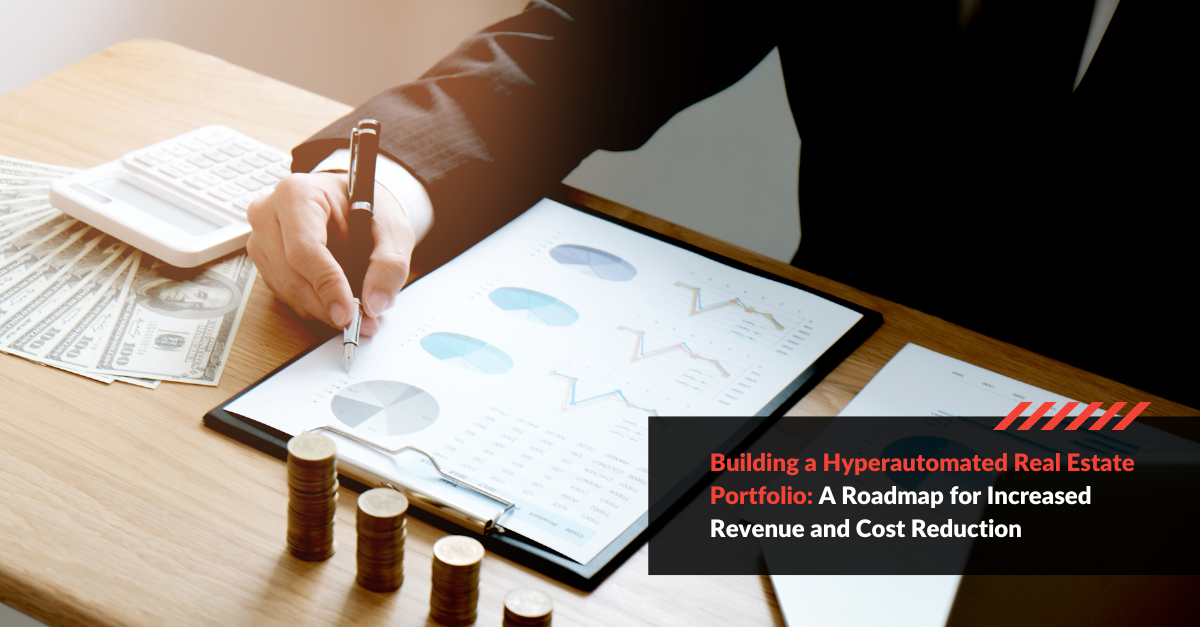In the real estate industry, maximizing revenue and minimizing costs are not just financial goals; they are pivotal strategies that dictate market competitiveness and long-term sustainability. This sector, characterized by its intricate balance of capital investment, operational expenses, and revenue generation, faces unique challenges that directly impact profitability.
One of the primary hurdles is the inherent variability in occupancy rates and rental yields, influenced by economic cycles, market demand, and competitive offerings. Additionally, the high costs associated with property maintenance, upgrades, and compliance with regulatory standards can significantly erode profit margins.
Moreover, the real estate sector often grapples with inefficiencies in property management and transaction processes. These include prolonged leasing cycles, manual data entry and documentation, and cumbersome tenant screening procedures, all of which contribute to operational delays and increased costs.
Addressing these challenges through strategic investment in hyperautomation not only streamlines operations but also opens avenues for enhanced revenue generation and cost optimization. By automating routine tasks, real estate businesses can reduce operational overheads, improve accuracy in financial reporting, and enhance tenant satisfaction—driving both cost savings and revenue growth in a competitive landscape.
With the US real estate market on the brink of an extraordinary leap, projected to soar to an estimated value of US$119.80 trillion by 2024, the horizon looks promising. This robust momentum is expected to sustain, with an anticipated steady annual growth rate (CAGR) of 4.51% from 2024 to 2028, culminating in a staggering market volume of US$142.90 trillion by 2028.
This unprecedented growth underscores not just the vitality but also the immense potential of the real estate sector, heralding a new era esof opportunities for innovation, investment, and strategic development aimed at harnessing this burgeoning market.
Understanding the Terrain: The Back Office of Real Estate
The back office in the real estate domain is a complex ecosystem involving numerous tasks that range from data entry and document management to compliance monitoring and client communication. These processes are critical yet often cumbersome, prone to errors, and incredibly time-consuming. Hyperautomation presents an opportunity to revolutionize these operations, turning challenges into assets.
The Blueprint for Hyperautomation
Refining Data and Documentation Operations
Data Entry Optimization: Begin by harnessing AI to automate the straightforward yet vital task of data entry. This step is about achieving unmatched precision and efficiency in data organization and management, allowing our teams to concentrate on higher-value activities that demand human insight and creativity. The core aim is to eliminate the repetitive strain of manual data handling, thereby reallocating time and talent to strategic endeavors that drive growth and innovation.
Advanced Document Management: Employ AI and ML technologies to transform the way we manage the extensive paperwork that underpins real estate operations. The focus here is on automating the sorting, filing, and retrieval of critical documents—enhancing accuracy, accessibility, and compliance without delving into data analysis. This streamlined approach ensures that documents are managed with a level of efficiency and precision that manual processes cannot match, liberating valuable resources for more impactful work.
Prioritizing Human-centric Client Engagement
In lieu of automated client communication tools like chatbots, our strategy emphasizes direct, personalized interactions that build trust and relationships. By freeing up the team from routine data and document management tasks through automation, it enables them to devote more time and energy to engaging with clients on a personal level.
Navigating the Implementation Path
The journey towards hyperautomation is iterative and requires careful planning. Start small by automating a single process or workflow and gradually scale as you gain confidence and understand the technology better. Collaboration with technology providers who specialize in real estate solutions can offer tailored advice and insights, making the transition smoother.
Of course, no hyperautomation initiative can succeed without a solid data foundation. Designing a robust data architecture is essential to ensure that the insights driving portfolio decisions are accurate, timely, and actionable.
Common Use Cases in Real Estate
Hyperautomation is reshaping the real estate sector by simplifying complex processes and enhancing efficiency across the board. Let’s decode this transformation in straightforward terms:
Streamlining Commercial Space Operations: With hyperautomation, the process of managing and reconciling Common Area Maintenance (CAM) expenses becomes much simpler. This means tenants are accurately charged for shared property costs, removing the hassle from financial operations.
Lease Management Made Easy: Hyperautomation offers a way to easily extract and manage important details from lease documents. This helps in keeping lease administration organized and ensures decisions are made with a clear understanding of lease terms. Here’s more about how you can automate your lease abstraction process.
Enhancing Property Management: Through automation, tasks like maintenance requests and tenant communications are handled more efficiently. This not only saves time but also improves the satisfaction of tenants, making property management smoother.
Improving Financial Reporting: Automation transforms financial reporting by making income statements, balance sheets, and other important financial documents more accessible and accurate. This allows property managers to better track the performance of their properties.
Efficient Tenant Onboarding: The process of bringing in new tenants can be greatly improved. From signing leases to moving in, every step is made quicker and more efficient, providing a better experience for tenants.
Better Document Management: Managing property-related documents becomes easier when automated. Important files are organized and can be easily accessed, making document management more efficient.
Both in commercial real estate and multifamily real estate space, the benefits continue. Automation streamlines lease management, tenant screening, and maintenance requests, making operations more efficient. Rent collection and vacancy management are also improved, ensuring that properties are occupied, and rent is collected on time.
Hyperautomation doesn’t just change individual processes; it’s transforming the entire real estate industry, making operations more efficient and allowing professionals to focus on the more important aspects of their work.
4. Measuring Success and Adjusting the Course
When navigating the hyperautomation journey within the real estate sector, measuring success and refining strategies are critical to achieving long-term benefits. Here’s a deeper dive into setting and evaluating metrics of success, specifically tailored to the nuances of the real estate industry:

- Operational Efficiency Metrics: Time savings on data entry and processing are crucial. Real estate businesses can measure the reduction in hours spent on manual data entry and document management, translating these into cost savings and reallocating resources to higher-value tasks.
- Quality Control Metrics: A decrease in document processing errors is vital for contracts, leases, and financial documents. Real estate firms should track error rates before and after implementing hyperautomation solutions to quantify improvements in accuracy and compliance.
- Client Satisfaction Scores: In real estate, client satisfaction is paramount. Automating client communication and service requests can enhance responsiveness and personalization. Measuring changes in client satisfaction through surveys and feedback pre- and post-automation implementation provides insights into the impact of hyperautomation on client relations.
- Lease Processing Time: The time taken from initial lease draft to signing is critical in commercial and multifamily real estate. Shortening this cycle through automation not only improves operational efficiency but also increases the agility in securing tenants.
- Vacancy Rates: For property management, reducing vacancies is a direct indicator of market responsiveness. Hyperautomation tools that streamline listing, screening, and onboarding processes can significantly impact vacancy rates, with success measured by the speed of filling vacancies.
- Financial Performance Indicators: Automated financial reporting can enhance the accuracy of revenue forecasts, expense tracking, and profitability analysis. Key financial metrics, including income statements and rent roll accuracy, should be monitored for improvements in financial reporting timeliness and precision.
Adjusting the Course Based on Metrics
Regular Review Cycles: Establishing regular intervals to review these KPIs ensures that the real estate business can adjust its hyperautomation strategies in response to performance data. This might mean tweaking automation workflows, expanding automation to new areas, or addressing any unforeseen challenges.
Feedback Loops: Integrating feedback from both internal stakeholders (such as property managers and financial officers) and external clients into the review process can provide qualitative insights that complement the quantitative data from KPIs.
Scalability Considerations: As the real estate business grows, its hyperautomation needs will evolve. Success metrics should include scalability assessments to ensure that automation solutions can adapt to increasing volumes of transactions, properties under management, and client interactions.
Technology Partnerships: Continuous engagement with technology providers is crucial for navigating the hyperautomation journey. Leveraging their expertise to refine strategies, implement updates, and introduce new functionalities can help real estate businesses stay at the forefront of automation technology.
By focusing on these specific industry metrics and being agile in strategy adjustments, real estate businesses can maximize the benefits of hyperautomation, driving efficiency, reducing costs, and enhancing client satisfaction in a competitive market.
Future-proofing Your Real Estate Portfolio
Hyperautomation is not a one-time effort but a continuous journey. Stay abreast of the latest advancements in AI and automation technologies. Adopting a forward-thinking mindset and being willing to innovate will ensure your real estate portfolio remains competitive and profitable in the long term.
Building a hyperautomated real estate portfolio is a strategic endeavor that promises substantial rewardsincreased revenue, reduced operational costs, and enhanced client satisfaction. By focusing on back office processes, real estate professionals can unlock new levels of efficiency and strategic insight, positioning themselves for success in the dynamic real estate market. The roadmap outlined above provides a starting point for this transformation, guiding real estate portfolios through the complex yet rewarding journey of hyperautomation.
The fusion of technology and strategic vision in the realm of real estate is not just about keeping pace with the times; it’s about setting the pace, charting new territories, and redefining what’s possible in the industry. Get in touch today to discover how Hyperautomation, tailored specifically for your real estate business, can kickstart your journey towards operational excellence and strategic growth.




